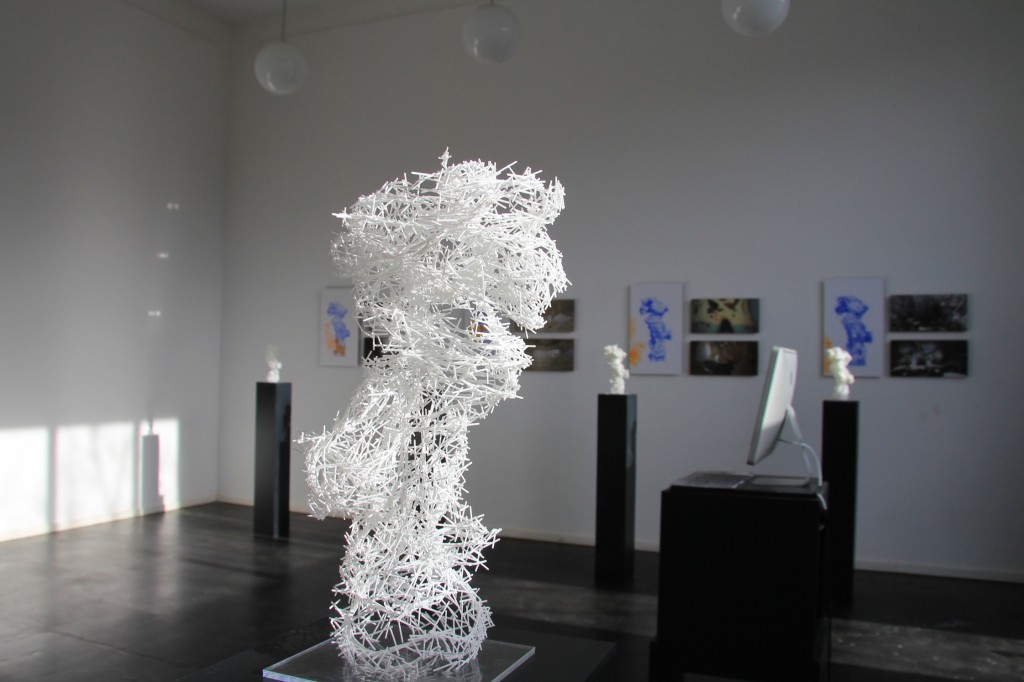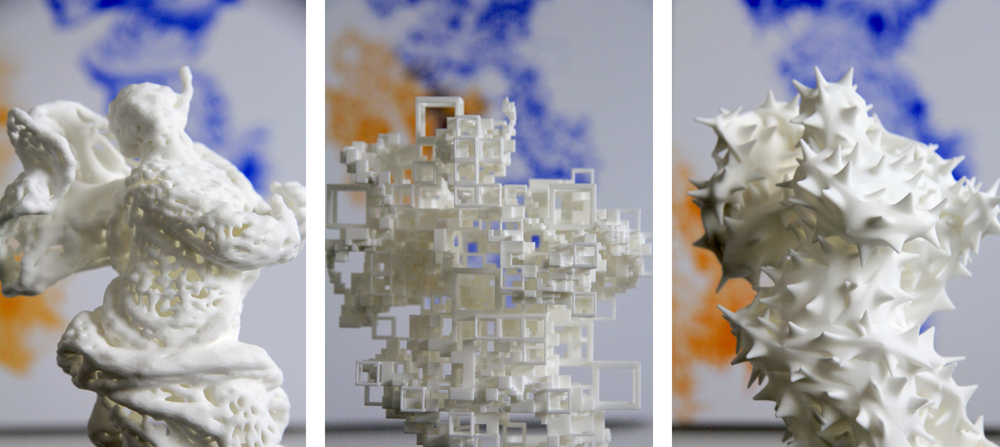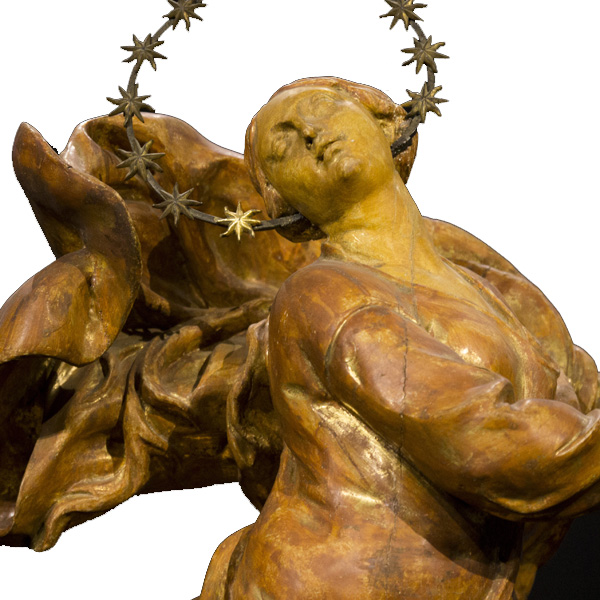Digital Bodies
|
Digital Bodies is first shown at the Städelschule Rundgang Feb. 14. – 16. 2014. The work strives to gain insight into form, aesthetics and geometry by digitally dissecting a scan of the sculpture Maria Immaculata by Matthias Steinl, 1688. The original sculpture resides in the Liebieghaus sculpture collection which kindly supported this project. The work is digitally altered by correlating quantitative analytics with generative design strategies. The result is presented in a series of rapid prototypes and silk-screen prints. Maria ImmaculataMary is standing on a globe and it seems she is elevated skywards in a spiralling movement. The back of the sculpture gives in immaterial expression and reminds one of clouds. This impression is in contrast to the curvaceous body which was originally gold plated. With this sculpture Matthis Steinl illustrated the Bible quote from the Apocalypse in the Gospel of John. It depicts a woman dressed by the sun, the moon at here feet and crowned by a ring of twelve stars. Mesh Acquisition – Surface ScanningThe scan of the sculpture was taken by a handheld structured light scanner delivering a high resolution polygon mesh. The data was cleaned, the mesh smoothed and adjusted in resolution. Along with the 3d information a series of images was acquired during the scanning process which were mapped back onto the final mesh. The main interest in the mesh was its richness in formal features such as folds, directions, movement, taut and slack areas, as well as the difference in depicted material like: flesh, hair, cloth. Mesh GeometryPolygon meshes are one of the first and simplest method to handle shape information in computer graphics. They describe form by a set of vertices (points), edges (lines) and faces (polygons). Any form can be approximated by a such a polygon mesh given a certain sampling tolerance. This often results in the mesh being optimised so smaller faces occur in areas of finer detail or heigh curvature and lager faces within areas of little change. Properties of form such as roughness, curvature, topology have to be computed of mesh. This can be done by evaluating the changes between adjacent faces. Along with these methods comes the opportunity to optimise the mesh for certain criteria. A benchmark polygon mesh model for testing new and existing analytical and optimisation algorithms is the Stanford Bunny. APD developed its own analysis tool to evaluate any given mesh for local curvature values. These include the direction and radius of minimum and maximum curvature, the Gaussian curvature and the Mean curvature. The last two give single values which determine surface qualities such as: synclastic, anticlastic, developable, flat. These numeric readings could be visualised against a colour scheme. Realising Forms with Discrete and Smooth ElementsArchitecture always requires to think a lager entity through the assembly of elements. This notion comes with its inherent challenges. An obvious and well studied one is traditional brick construction. Here, a single, standardised element is used to realise any given form. This is quite different to a construction logic used in Gothic structures where stones where cut individually each for a specific location to fit. There is also a different approach in architectural design where form is developed by embracing the inherent challenges of a given construction system. The work of Eladio Dieste is a great example of taking brick constructions to its very limits. This bottom-up strategy comes at the cost of excluding a vast array of possible results. In recent years digital design focused in on such bottom-up design strategies. The work shown here tries to unlock this method of operation by introducing an expressive form rich in features. It references works by Antony Gromley but is not interested in its relation of the human body itself more so in thinking through form given a flexible system. By doing so the well rehearsed mode of bottom-up design is not neglected but questioned as it has to adapt more radically. Expressive FormIn 2008 Patrik Schumacher first introduced Parametricism as Style. He argued for something that was already happening in digital design at that time: intricate correlations between elements and subsystems [which] should accentuate and amplify difference. An illustrative comparison could be made to the work of Philip Ball who describes the science behind animal fur patterns such as leopards and zebras and how they adapt different to the different parts of the body. The work on Digital Bodies embraces the notion of expressive difference without committing to either a Manifesto on Parametricism nor to biomimicry. It aims at negotiating the boundary between performative design and exuberant formalism. StudentsAnastasios Ioannou Mehran Rahmani Peyman Esmaeelpour Sabina Eivazova Soso Beridze Theodora Janenita Vasily Sitnikov Yulia Kuzhleva |







Pingback: NODE15 Wrapped In Code | informance